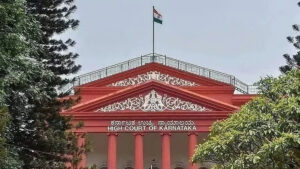In a shocking revelation, a young student named Mr.S Singh has become the victim of an elaborate education scam, which has not only shattered his dreams but also raised concerns about the credibility of higher education institutions. Mr. S Singh, who enrolled at Ahmedabad, found himself entangled in a web of deceit that has resulted in a devastating outcome. Let’s delve into the sequence of events that led to his tragic downfall.
S Singh, a bright and ambitious student hailing from Karnal, had successfully completed his studies and was eager to apply for his degree and transcript. Following the information provided on the university’s official website, Mr. S Singh contacted the designated mobile phone number. He was advised to visit the university in person to initiate the process.
With hope in his heart, Mr. S Singh made his way to the university, where he encountered an official claiming to be the sole point of contact for all phone calls, verification procedures, mark sheet printing, and degree issuance. Unfortunately, Mr. S Singh’s interactions were limited solely to this individual, as he was unable to meet any other university staff members during his visit.
Trusting the assurances given by the official, Mr. S Singh handed over a substantial amount of Rs. 10,000 in cash, along with copies of his mark sheets and his residential address. He was promised that his degree and transcript would be delivered to his home within 15 days.
Days later, Mr. S Singh received speed post, the eagerly awaited degree and transcript, which gave him a renewed sense of confidence. Fueled by his visit to the university, his payment, and the delivery of the documents to his doorstep, he decided to pursue his dreams further by applying to the Canadian embassy.
However, the dream quickly turned into a nightmare when the Canadian embassy initiated a verification process with University. Shockingly, the university denied any record of Mr. S Singh’s enrollment and declared his degree as fraudulent. Consequently, the embassy issued a legal notice demanding a verification letter from the university within a tight 10-day timeframe.
Desperately seeking answers, Mr. S Singh reached out to the same mobile number that had originally informed him to collect his degree and transcript. To his dismay, his calls were rejected or ignored, leaving him in a state of despair. In a final attempt for resolution, Mr. S Singh traveled back to the university, where he encountered the same official once again.
This time, the official assured Mr. S Singh that he would send the verification letter to center, the institution where Mr. S Singh had initially enrolled. However, Mr. S Singh submitted only copies of his mark sheet and degree, with the promise that the verification letter would be sent to him through center.
As days turned into weeks, Mr. S Singh anxiously awaited the letter, only to be devastated by the university’s declaration that he was a holder of a fake degree. The consequences were severe, as Mr. S Singh faced a 10-year ban and the shattering of his dreams to pursue his aspirations in Canada.
Mr. S Singh’s heart-wrenching story serves as a stark reminder of the vulnerability of students seeking higher education. It calls for a thorough examination of the accreditation and credibility of educational institutions. This unfortunate incident should serve as a wake-up call to ensure that aspiring students are protected from fraudulent practices.









